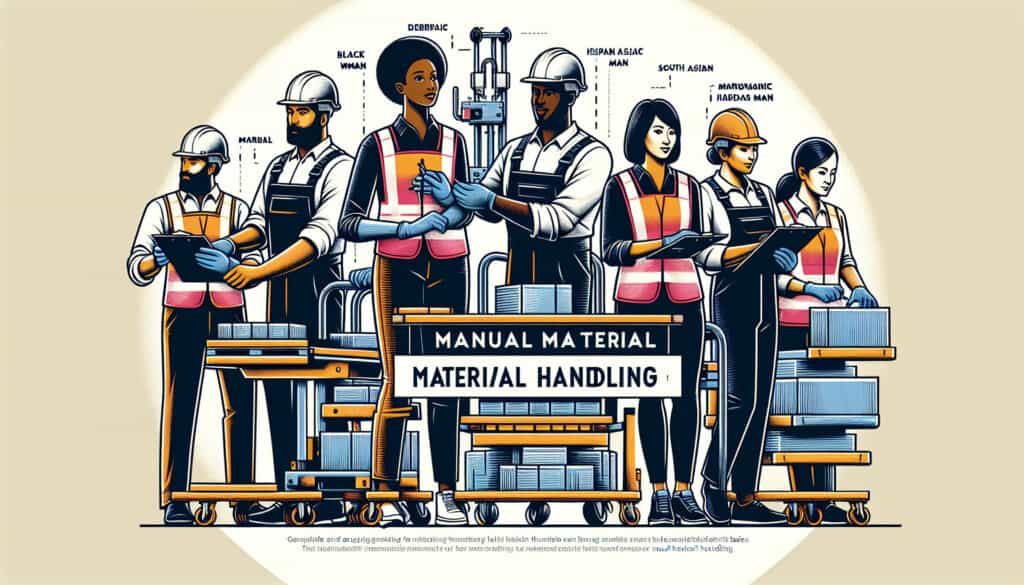To determine the maximum acceptable weights and forces for manual handling tasks.
- Methodologien: Kunden & Marketing, Lean Sigma, Produktdesign
Liberty Mutual Manual Material Handling Tables (Snook Tables)

Liberty Mutual Manual Material Handling Tables (Snook Tables)
- Kontinuierliche Verbesserung, Ergonomie, Menschliche Faktoren, Human Factors Engineering (HFE), Schlanke Fertigung, Prozessverbesserung, Qualitätsmanagement, Risikomanagement, Sicherheit
Zielsetzung:
Wie es verwendet wird:
- A set of tables that provide guidance on the maximum acceptable weights and forces for lifting, lowering, pushing, pulling, and carrying tasks. They are based on psychophysical data and are widely used in ergonomics to design safe manual handling tasks.
Vorteile
- Provides a scientific basis for designing safe manual handling tasks; Widely accepted and used in industry.
Nachteile
- Can be complex to use and interpret; May not be applicable to all situations.
Kategorien:
- Ergonomie, Risikomanagement
Am besten geeignet für:
- Designing safe manual handling tasks to reduce the risk of musculoskeletal disorders.
The Liberty Mutual Manual Material Handling Tables, often referred to as Snook Tables, provide a standardized approach to assessing and mitigating risks associated with manual handling tasks. These tables derive their recommendations from psychophysical research, which examines human capabilities and limitations in the context of lifting, lowering, pushing, pulling, and carrying objects. Common applications include workplace ergonomics assessments across various industries such as manufacturing, warehousing, healthcare, and construction, where manual handling is prevalent. In project phases involving task design or risk assessment, ergonomists, health and safety professionals, and industrial engineers often utilize these tables to establish safe weight limits in manual handling tasks, thereby enhancing worker safety and productivity. The involvement of personnel from Humanressourcen and occupational health is also crucial, as they can help implement training and develop policies based on the insights rendered from the tables. The primary advantage of employing the Snook Tables lies in their scientifically validated metrics, which provide objective guidance for developing safer handling procedures. This broad acceptance in industry not only helps companies comply with safety regulations but also supports initiatives aimed at reducing musculoskeletal disorders among employees. The application of these tables often leads organizations to engagieren in continuous improvements and reassessments of their manual handling protocols, ensuring long-term safety and efficiency in operational practices.
Die wichtigsten Schritte dieser Methodik
- Identify the manual handling task and its specific requirements.
- Reference the Snook Tables to determine maximum acceptable weights and forces.
- Assess the postures and movements involved in the task.
- Evaluate the frequency and duration of the manual handling activity.
- Consider environmental factors, such as surface conditions and space constraints.
- Implement design modifications based on the analysis from the tables.
- Test the modified task for compliance with ergonomic standards.
- Monitor employee feedback and adjust the design as necessary.
Profi-Tipps
- Integrate task-specific risk assessments with Snook Tables to account for individual worker characteristics like height and strength.
- Regularly update and validate lifting and carrying recommendations by consulting with recent ergonomic research and field studies.
- Utilize feedback loops from employees during task observations to refine and adapt manual handling guidelines for various job roles.
Verschiedene Methoden lesen und vergleichen, Wir empfehlen die
> Umfassendes Methoden-Repository <
zusammen mit den über 400 anderen Methoden.
Ihre Kommentare zu dieser Methodik oder zusätzliche Informationen sind willkommen auf der Kommentarbereich unten ↓ , sowie alle ingenieursbezogenen Ideen oder Links.
Historischer Kontext
1986
(wenn das Datum nicht bekannt oder nicht relevant ist, z. B. "Strömungsmechanik", wird eine gerundete Schätzung des bemerkenswerten Erscheinens angegeben)

Verwandte Artikel
Monte-Carlo-Simulation
Modellbasiertes Testen
Modellprüfung
Forschung mit gemischten Methoden
Fehlervermeidung (Poka-Yoke)
Prüfung des Missionsprofils